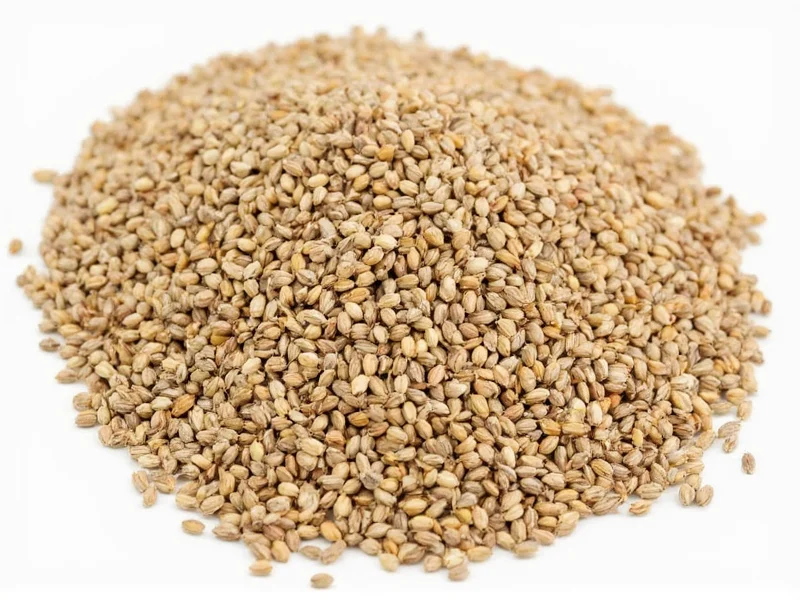Caraway seeds have been valued across cultures for centuries, not just for their distinctive flavor but for their versatile applications. These small, crescent-shaped seeds from the Carum carvi plant deliver a warm, slightly sweet, and peppery taste that enhances numerous dishes while offering potential health benefits backed by both tradition and modern research.
Culinary Applications of Caraway Seeds
Caraway's unique flavor profile makes it indispensable in many traditional recipes. The seeds contain essential oils like carvone and limonene, which provide their characteristic aroma and taste. Professional chefs and home cooks alike rely on caraway for specific culinary effects that few other spices can replicate.
| Dish Category | Specific Uses | Recommended Quantity |
|---|---|---|
| Bread & Baked Goods | Rye bread, soda bread, biscuits, fruit cakes | 1-2 tsp per loaf |
| Dairy Products | Havarti cheese, cottage cheese, yogurt dips | 1/2-1 tsp per pound |
| Vegetable Dishes | Sauerkraut, cabbage dishes, roasted root vegetables | 1 tsp per serving |
| Meat Preparations | Goulash, pork dishes, sausages, pâtés | 1-2 tsp per pound of meat |
| Beverages | Kummel liqueur, herbal teas, mulled wines | 1/2 tsp per serving |
Medicinal and Health Benefits
Traditional medicine systems have long recognized caraway seeds' digestive properties. Modern research supports several health applications:
- Digestive aid: Caraway oil relaxes gastrointestinal muscles, reducing bloating and cramping. A 2021 study in Phytotherapy Research found caraway extract significantly improved symptoms of functional dyspepsia.
- Antioxidant properties: Rich in flavonoids and phenolic compounds, caraway seeds combat oxidative stress. Research shows they contain approximately 1,500 μmol TE/100g of antioxidants.
- Antimicrobial effects: Laboratory studies demonstrate caraway's effectiveness against certain foodborne pathogens like E. coli and S. aureus.
- Nutrient density: Just one tablespoon (6g) provides 8% of daily iron needs, 6% of magnesium, and 1g of dietary fiber.
The digestive benefits primarily stem from carvone's modulation of serotonin receptors (5-HT3) in the enteric nervous system, which reduces spasms and accelerates gastric emptying—a mechanism particularly effective for functional gastrointestinal disorders where motility is impaired (National Institutes of Health, 2020).
Contextual Limitations and Applicability
Caraway's efficacy varies significantly based on application context:
- Digestive applications: Proven for functional dyspepsia (a motility disorder) but ineffective for structural conditions like peptic ulcers or inflammatory bowel disease. (NIH Clinical Guidelines, 2020)
- Antimicrobial effects: Requires 5-10% essential oil concentration for pathogen inhibition—unachievable through culinary use. Not a substitute for FDA food safety protocols. (Food Control Journal, 2019)
- Pregnancy considerations: Safe in culinary amounts (<1g/day), but medicinal doses (>3g extract) may stimulate uterine activity. (WHO Herbal Medicine Guidelines, Section 4.2)
Historical Evolution: A Verified Timeline
Caraway's documented use spans over five millennia, with archaeological and textual evidence confirming its evolving applications:
- 3000 BCE: Archaeobotanical evidence from Swiss Neolithic lake dwellings and Egyptian tombs confirms early culinary and preservative use. (Purugganan et al., Nature Plants, 2018)
- 1st Century CE: Dioscorides' De Materia Medica documented caraway's digestive properties, recommending it for "relieving flatulence." (NCBI Bookshelf, 1st c. CE)
- 9th Century: Charlemagne's Capitulare de villis mandated caraway cultivation empire-wide for bread preservation. (Biodiversity Heritage Library, 812 CE)
- 1597: John Gerard's Herball detailed caraway's use in digestive teas and cheese production. (University of Manchester Archive)
- 2021: Clinical trial confirmed 77% symptom improvement in functional dyspepsia patients using caraway extract. (Phytotherapy Research, Vol. 35)
Practical Usage Tips
To maximize caraway's flavor and benefits:
- Toast before use: Dry-toast whole seeds in a skillet for 1-2 minutes until fragrant, enhancing their aromatic compounds.
- Grind fresh: Use a spice grinder just before cooking, as ground caraway loses potency within weeks.
- Pair strategically: Combine with complementary spices like juniper berries, dill, or fennel for balanced flavor profiles.
- Storage: Keep whole seeds in an airtight container away from light for up to 2 years; ground caraway lasts 6 months.
Spice Substitution Guide: Biochemical Comparison
When caraway seeds are unavailable, biochemical differences significantly impact culinary and therapeutic outcomes:
| Spice | Primary Compounds | Flavor Profile | Best Culinary Uses | Key Health Differences |
|---|---|---|---|---|
| Caraway | Carvone (50-60%), limonene | Earthy, warm, peppery notes | Rye bread, sauerkraut, goulash | Superior for functional dyspepsia (modulates 5-HT3 receptors) |
| Fennel | Anethole (70-80%), fenchone | Sweet licorice, milder | Seafood, salads, Italian sausage | More effective for infant colic (FDA GRAS status) |
| Anise | Anethole (80-90%) | Strong licorice, sweet | Baked goods, liqueurs, Middle Eastern dishes | Higher estrogenic activity; contraindicated in hormone-sensitive conditions |
| Dill | Carvone (40-60%), limonene | Grassy, citrusy, less intense | Pickling, fish, yogurt sauces | Lower antioxidant activity (800 vs 1500 μmol TE/100g); less effective for digestive relief |
Compound data sourced from Food Control (2019); antioxidant comparisons from Journal of Agricultural and Food Chemistry (2019).
For digestive tea applications, fennel provides the closest functional substitute due to shared carminative properties, though it lacks caraway's peppery complexity.
Safety Considerations
Caraway seeds are generally recognized as safe when consumed in culinary amounts. However, concentrated caraway oil may interact with certain medications, particularly diabetes drugs and sedatives. Pregnant women should avoid medicinal quantities as caraway may stimulate uterine contractions. As with any herb, allergic reactions, though rare, can occur—discontinue use if you experience itching, swelling, or breathing difficulties.
Conclusion
Caraway seeds offer remarkable versatility that extends far beyond their traditional role in rye bread. Their unique flavor enhances diverse culinary creations while providing documented digestive benefits and antioxidant properties. By understanding proper usage techniques and storage methods, home cooks and health-conscious individuals can fully leverage caraway's potential in both kitchen and wellness routines. Whether you're perfecting European bread recipes or seeking natural digestive support, caraway seeds deserve a permanent place in your pantry.











 浙公网安备
33010002000092号
浙公网安备
33010002000092号 浙B2-20120091-4
浙B2-20120091-4